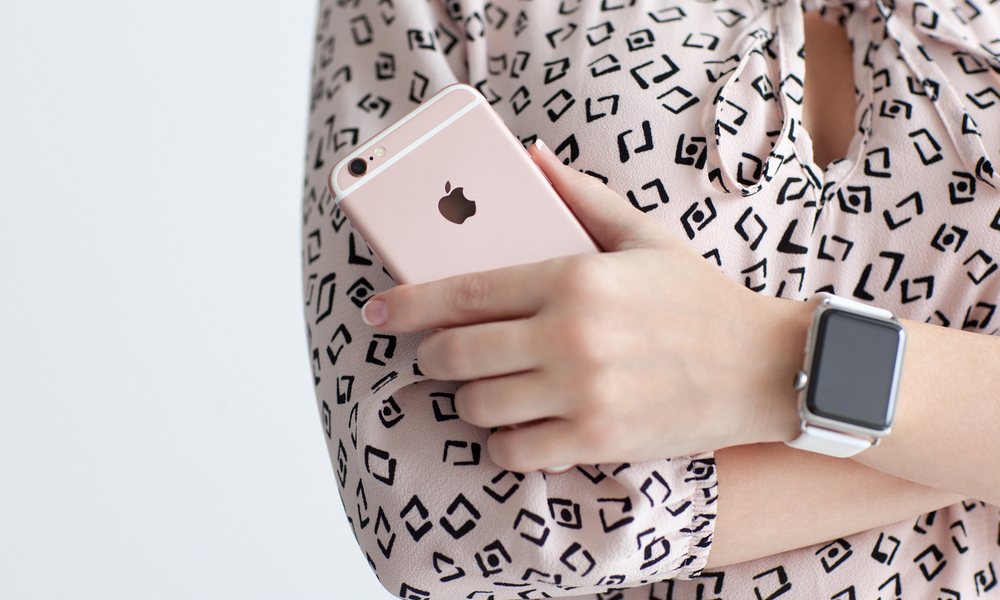Apple’s Dance with the Fashion Industry is Over
 Credit: Denys Prykhodov / Shutterstock
Credit: Denys Prykhodov / Shutterstock
Toggle Dark Mode
When Apple unveiled its flagship wearable five years ago, there was no doubt that the company was putting more of an emphasis on fashion and design than it ever had before. With the Apple Watch, the company that had always led the technology industry in design and aesthetics appeared to also be poised to turn itself into a fashion brand.
The Apple Watch wasn’t the first smartwatch, but there was no doubt that it got the attention of the fashion industry in a way that no other piece of technology had succeeded in doing, quickly showing itself to be a stark contrast to competitors like the Samsung Galaxy Gear, Pebble, and Moto 360, most of which looked positively clunky by comparison, and all of which had been written off by fashionistas as “techie gadgets.”
Yet, somehow the Apple Watch ended up gracing the cover of fashion magazines worldwide, from Vogue China to Australia’s Elle and Canada’s Flare. Suddenly a device that most would have written off as just another gadget was being worn on the wrists of supermodels.
The fact that the Apple Watch gained such cachet with the fashion industry was no accident, however, but rather part of a carefully orchestrated campaign by Apple for which the company had been laying the groundwork for years, beginning with the hire of Burberry CEO Angela Ahrendts as its new Senior VP of Retail, along with Yves Saint Laurent CEO Paul Deneve and Tag Heuer’s Patrix Pruniaux. These and other fashion industry power brokers came with a wealth of contacts that allowed Apple to lure in fashion journalists from around the world and the unique knowledge of what needed to be done to impress the fashion industry with what would have otherwise been written off as just another uninspired gadget.
For example, it’s clear that Apple’s Gold Edition Apple Watch served the sole purpose of ensuring that the extremely pretentious and showy fashion market would actually take Apple seriously in a realm dominated by brands like Rolex, Breguet, and Patek Philippe.
Five years ago there was no doubt that Apple was serious about courting the fashion industry, but looking back at it now, it seems that the relationship between fashion and technology wearables has cooled. In a new article, The New York Times highlights exactly how much has changed from the days when Apple led the way among technology giants pushing forward the future of fashion to an era when the two industries seem to have all but parted ways.
When the Apple Watch launched, there seemed to be a certain need to impress the fashion industry; after all, for the first time Apple was introducing a fashion accessory — something that users would wear rather than merely carrying around with them. Since then, however, the connection between wearables and fashion has gotten extremely quiet, and Apple has clearly realized that maybe impressing the movers and shakers of the fashion world wasn’t as important as it once thought. Fashion moguls Deneve and Pruniaux both eventually left Apple, and even Apple’s SVP Angela Ahrendts will be departing next month, being replaced by Apple veteran executive Deirdre O’Brien, a very strong and capable leader , but certainly not one with a background in the fashion industry. It would seem that by all estimations, Apple’s dance with the fashion industry has ended.
Mind you, Apple is far from alone in this case. While the Apple Watch certainly made the biggest splash, it wasn’t the only company playing to the fashion industry back in 2014 — Google had already tried to somewhat laughably promote its ill-fated Google Glass on the runway back in 2012, and other smartwatch makers from Samsung to Motorola all sought to lineup wearable product unveilings at fashion events.
The Venn overlap is not as great as anyone thought. Technology is essentially about creating utility and spreading it over billions of people. Fashion is about creating a moment, a trend, a romance and spreading it across a small amount of influential people.
Scott Galloway, professor of marketing, New York University Stern School of Business
It’s understandable how so many people could have assumed a natural symbiosis between wearable technology and fashion, but it turns out that the two industries had vastly different objectives that weren’t as compatible as they appeared at first glance. While both involve things people wear, that was ultimately where the relationship ended. The short attention span of the fashion industry, which was always looking for the next big exclusive thing, actually ended up clashing with the goals of technology companies. Apple may introduce a new Apple Watch every year, but these are iterative products that are designed to serve practical purposes, not the disruptive trendy products that are entirely about style rather than substance.
Of course, this doesn’t mean that Apple is abandoning the Apple Watch, or even giving up on its attempts to make it stylish — the company still sells the wearable in a variety of colors and finishes, releases new collections of watch bands several times a year, and maintains partnerships with premium style brands like Hermès — but it’s certain that Apple and its rivals no longer feel the need to compete for the short-lived attention span of the fashion industry in order for the Apple Watch and other wearable products to succeed.






